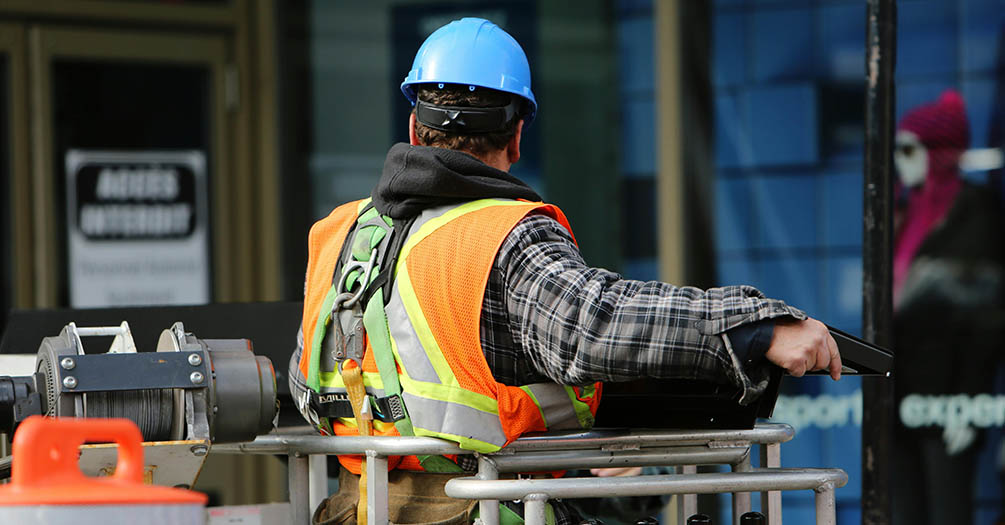Federal budget cuts and worker safety

One of the federal institutes focused on keeping workers safe from injury and illness on the job has lost about two-thirds of its staff due to federal budget cuts.
The cuts to the National Institute for Occupational Safety and Health has workplace safety experts such as Richard Neitzel, director of the Center for Occupational Health and Safety Engineering at the University of Michigan, concerned that "without this research, more Americans will suffer preventable injuries and illnesses, businesses will face higher costs, and families will lose loved ones to workplace accidents that could have been prevented."
From its labs and in the field NIOSH's research, education and training, health hazard evaluations, contagious disease response and other services have led to changes such as reducing asphalt fumes and protecting firefighters, miners, construction workers and a range of other professions from dangerous situations. Shielding reproductive health, improving worker well-being and preventing workplace violence are among a long list of issues NIOSH addresses and that affect workers everyday, everywhere, he said.
Neitzel, who is also a professor of Environmental Health Sciences and Global Public Health at the University of Michigan School of Public Health, is available for interviews to discuss the impact of cuts to an agency credited with turning research and knowledge into safety practices and policy since 1970.
Could you share some examples of common items or practices we see today that grew out of the National Institute for Occupational Safety and Health?
There are many examples of things that are common work practices today that grew out of NIOSH recommendations. These include hearing loss prevention programs, heat stress management strategies, infectious disease mitigation methods, programs to reduce occupational stress, injury prevention programs, and more. The impacts of the efforts of NIOSH are felt every day in workplaces across America ... The research that has come from NIOSH researchers, or from university researchers funded by NIOSH, has resulted in changes in how a large number of occupational hazards are handled in today's workplaces. These include hazards like noise exposure, working with robots, heat stress, lung disease or black lung disease in coal miners, exposures to nanoparticles, new forms of respiratory protection, and more.
Which workers does NIOSH focus on and what are some of their safety issues?
NIOSH funds research that focuses on all types of U.S. workers, such as mining workers, firefighters, construction workers, health care workers, manufacturing workers, service industry workers, farm workers, and more. There are more than 160 million workers in the U.S., and these workers face issues like exposure to harmful chemicals, infections from communicable diseases, exposure to physical agents like noise, psychosocial stressors, injury risks, and more. The research funded by NIOSH addresses all of these issues, and more.
Do you know of work that was in progress that may now end? What could the cuts to funding and staffing at NIOSH mean for American workers?
There are a number of key impacts of these cuts. First, research done by researchers inside NIOSH has ended. Second, research by university professors around the US who are funded by NIOSH has ended. Finally, the training programs that NIOSH funded—which supported students to train to become occupational health and safety practitioners—has ended. Collectively, this means that American workers will not benefit from practical, real-world health and safety research that helps reduce accidents, injuries, illnesses and fatalities, and that the pipeline of well-trained occupational health and safety professionals entering the workforce will dry up. This will ultimately result in more American workers becoming sick or injured on the job from preventable workplace exposures.
Do industries more prone to workplace injuries and deaths receive special focus?
In order to prioritize the agency’s limited resources, NIOSH has long focused on industries and jobs that have the highest rates of illnesses and injuries. These include industries like mining, agriculture, transportation and construction. But NIOSH has not neglected other industries, and much of the research that they have done or funded is applicable to all U.S. workers, for instance, research on workplace stress, noise, ergonomic hazards and other very common issues.
Does NIOSH benefit employers or is it more of a watchdog, check on employers?
NIOSH has no regulatory role and does not do any enforcement of labor or health rules; they are strictly a research agency. As such, NIOSH researchers are often welcomed by both employers and workers as a resource and source of assistance in tackling complicated and hazardous workplace conditions.
What are some examples of your team at U-M's work specifically?
Students associated with the Michigan Center for Occupational Health and Safety Engineering have engaged in a variety of projects that have improved work safety and health. These include studies designed to understand and improve working conditions among farmworkers; studies evaluating risk factors for fatal and nonfatal injuries; studies assessing opportunities to reduce injury risks through the use of exoskeletons; studies evaluating the impacts of psychosocial stressors among workers; studies designed to reduce the risk of hearing loss from noise and certain chemicals and more. These are just a few examples of NIOSH-funded research being conducted by universities across the U.S. that can lead to improvements in the working conditions of American workers.
Media Contact
Kim North Shine
Senior Public Relations Representative, Health Sciences
Michigan News
[email protected]
313-549-4995
